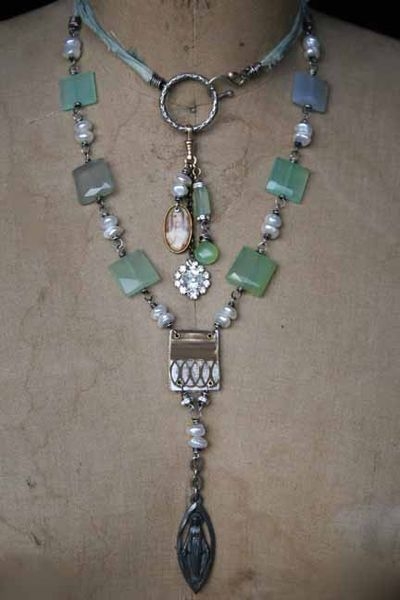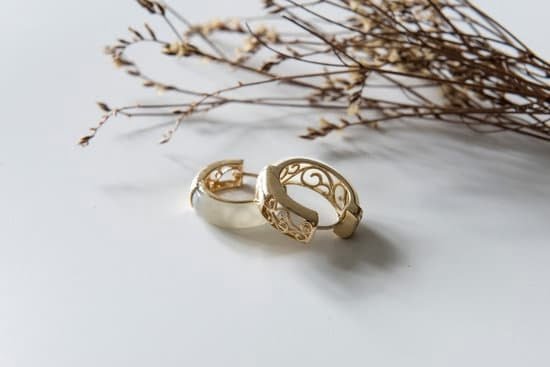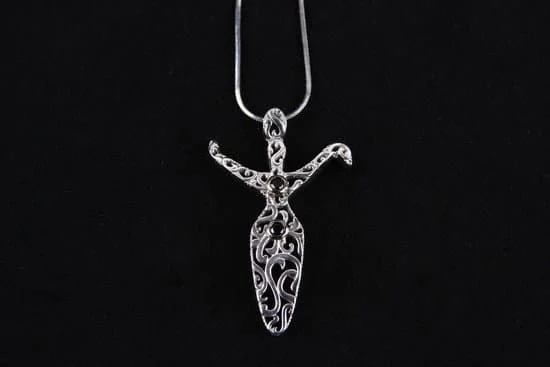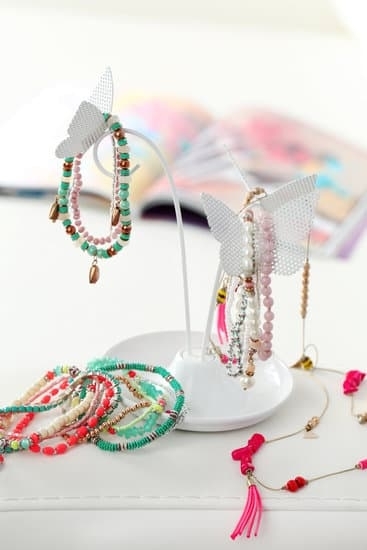The Victorian Era was an important period of time in the history of England and in particular during the reign of Queen Victoria (1837-1901). During this period, jewelry featuring hair was heavily popularized. From delicate lockets with loved ones’ braided tresses, to subtle beaded and woven strands that invoked a sense of romance, Victorian hair jewelry has been around for centuries and continues to be a meaningful way to express love or commemorate a special moment in life.
Naturally, advances in technology such as photography made it easier for families to access beautiful portraits of loved ones, however jewelry featuring actual human hair remained popular with many members of Victorian society. This style of jewelry took on greater significance as there were many superstitions about retaining locks of someone’s hair, usually that if you kept some you would remember them forever and be connected even after death.
This gave those who could afford to have their loved one’s braided locks set into gold or silver locket charms an extra layer of sentimental meaning. Furthermore this method was considerate more practical than preserving ashes as part of mourning jewellery especially during bereavements which often happened fairly frequently during the late 19th century due to highly contagious illnesses like cholera that ran rampant throughout European populations at the time.
Overall, Victorian Hair Jewelry remains relevant today for its connection to personal memories and its historical symbolism. Both new and experienced collectors find great value in antique pieces given how much detail local craftspeople had in preserving memories through vast intricacies embedded within these intensely romantic mementos.
Vintage lovers are also able to appreciate these unique pieces as they represent an upscale take on a timeless keepsake tradition – a piece worn close to the heart no matter what era you inhabit.
The Rise of Victorian Fashion
The Victorian era is known as a time of great beauty and fashion. This was particularly true in the realm of jewelry, with women often wearing elaborate pieces that exuded luxury and opulence. One of the most popular trends during this time period was Victorian hair jewelry, which featured intricate design elements created from a woman’s own hair.
Victorian hair jewelry was highly sought after and often had sentimental value for its wearer. These pieces were typically crafted using an individual’s own hair, or the hair of their loved ones who had passed away. This use of human hair symbolized a special bond between two people, creating a lasting tribute to their relationship that would live on through the generations.
It also provided a unique personalized touch to one’s piece of jewelry, since each piece would reflect their individual characteristics and life story. Additionally, many Victorians found that wearing these special keepsakes connected them with those they had lost in some way.
One reason why demand for Victorian hair jewelry soared during this period was due to increased industrialization leading to better quality materials and artisanal techniques which resulted in stunning works of art. As the craftsmanship improved so too did the quality of these pieces making them highly desirable adornments at balls, state dinners, and parties among other social gatherings where they could be admired by all in attendance.
Various metals such as gold and silver combined with precious stones such as sapphires and diamonds significantly increased the value of these pieces while enameling and engraving added even more intricacy to an already captivatingly beautiful design. Soon a rising number of fashionable women began seeking out this type of art for themselves as well as for their loved ones due to its ability to exude elegance and timelessness at any event.
Popularity
During the Victorian era, hair jewelry was an incredibly popular type of adornment. Hair jewelry was a way for people to show their wealth and status during this era. It was also seen as a sign of love as people used sentimental pieces to express emotions.
Many of the pieces contained locks of human hair obtained from deceased loved ones, or from their spouses or children. The Victorian period ended in 1901, but its influence can still be seen today through the addition of sentimental pieces into modern day wedding engagement rings and necklaces.
Hair jewelry was not only popular among people in the upper classes but it could be purchased or made by anybody with time and resources, making it accessible to everyone during the era looking to portray a certain status symbolized by the ornamentation. Hair from relatives or close friends could be woven into intricate designs that were often fashioned like bows, hearts, stars, horseshoes and other signs of luck or felicity.
Additionally, memorial pieces could also be crafted using hair relics as mementos to remember lost loved ones.
These mourning pieces included both brooches and rings which were generally made in black enameled metalwork settings with added gold edging. Additionally, items such as earrings were created through the process of weaving small bundles of hair into simple earring clasps for a more subtle reminder for those wearing them.
In Victorian times, these pieces typically served two purposes; one being a sentimental tribute and secondly to socialize if someone owned enough jewelry depicting the workmanship that was required pay homage to its complexity and import.
As such hair jewelry carried considerable connotations with regard to family standing seeing how detailed it had become throughout the years in terms of design and manufacture intricacy which then came at great cost depending on its craftsmanship level achieved by master jewelers who gained recognition over centuries.
Thus posh Victorians would obtain only quality prized jewels that spoke volumes regarding monetary success when paraded around public occasions showing defiance towards poverty due its extravagance nature endorsed among peers celebrated at society events mingling amongst attainable gentry present too indicating class parity.
Crafting Process
The Victorian era was a period of great change for the world. It marked the beginning of a move away from traditional social norms, and coincided with an upsurge in fashion trends and styles. One particular area of focus in this era was hair jewelry, which served as a distinctive way to adorn oneself and show off individual personalities. The craftsmanship behind these intricate works was impressive, with various techniques and skills used to create breathtaking pieces.
From a crafting standpoint, some common materials employed in the making of Victorian-era hair jewelry included mother-of-pearl, glass beads, seed pearls, freshwater pearls, amethyst crystals, emeralds, black jet stones and diamonds. These precious items were carefully layered upon a metal base such as gold or silver for stability and then painstakingly hand-stitched onto french twist combs with specialist wire threading needles.
With patience and creativity of design, amazing results could be achieved such as pieces featuring delicate beading that replicated flowers or foliage motifs.
Not surprisingly there are still workshops around today where skilled artisans use traditional methods to make hard stone settings with onyx settings around metallic fabrics like gold or silver laces. Furthermore advances in modern technology are being used to create further detailed pieces accurately within shorter timescales compared to traditionally made hair jewelry. This is great news for those looking for exquisitely crafted jewellery that reflects their personality.
In conclusion we can appreciate the fact that during the Victorian era people spent considerable time crafting exquisite pieces through skillful weaving of components together into beautiful masterpieces – something that will never go out of style.
Materials
The Victorian Era was celebrated not only as a period of great fashion and style, but also for its creativity when it comes to hair accessories. From the iconic chignon bun to elaborate updos, Victorian women frequently adorned their coiffures with a variety of jewelry pieces made from luxurious materials. These items created both a practical purpose in helping to keep certain hairstyles in place, as well as a fashionable one for the purpose of personal adornment.
Although there were many examples of Victorian-era hair jewelry that utilized common materials like cloth or fabrics, what really took the world by storm were the pieces fashioned out of precious stones and metals. Jewelers around Great Britain sought to craft some rather unique and opulent pieces – including earrings, tiaras, lockets and jewels woven into fancy headdresses – from precious metals like gold and silver.
Precious stones such as rubies, emeralds, sapphires and diamonds were routinely added to these eye-catching creations for an added level of luxury and sparkle.
Another notable material used in fashioning such items during this time period was pearl strands believed to have originated in France; with large castles often using them exclusively on elaborate chignons meant to be shown off at grand social events. Meanwhile smaller pearl strings which wrapped around buns without weighing them down too much continued to become more popular among those outside the court’s reach looking to make an impression at considerably less cost than their grander counterparts.
Additionally bone components found their way onto various hair jewelry pieces during the Victorian Era: often taking shape as ivory brooch pins that could be used inside small Alice bands hidden behind talented up dos.
Design Evolution
The Victorian era was an especially fascinating period of fashion and style when it came to jewelry. Hair jewelry of this time was no exception as it featured unique designs adapted through the various sub-periods of the Victorian era.
While Antique Victoria Jewellery generally comprised of natural materials such as ivory, amber and spongy coral, in the later period fashion designers began experimenting with more vibrant gemstones and a range of metals such as gold, silver, copper and even aluminium.
In each period, the style changed drastically but we can still trace elements of design from previous eras maintained throughout all time periods. For example Gothic, floral and intricate scrolling was prominent features all throughout these years in different aspects often featuring scenes from nature such as birds, plants or animals which were deeply popular with the Victorian people.
Similarly fine merging and complex filigrees were prominent aspects which unraveled extreme attention to detail in most hair ornaments crafted during this era.
We can also see how other modes of fashion influenced the design decisions made during each of the periods. During Late Victorian period there was a lot more experimenting with bright colours while influences such as Art Deco at some points transformed traditionally elaborate designs into simplistically elegant pieces that were easier to reproduce too.
One major thing that set apart hair jewelry from other types during this era is popularity around comb structures as they could support large complex centerpieces universally creating a one-of-a kind appearance to them all regardless of exact design changes adopting by trade per usual.
This small feature undeniably separates hair accessories from regular sparkles we don’t often consider owning today but for good reason can’t take away its extreme elegance giving us full appreciation for fashion evolution in a more meaningful way now than ever before.
Cultural Influence
The Victorian-Era of the 1800’s saw the emergence of a big trend in hair jewelry. This fashion statement was popular for both men and women, signaling modernity and sophistication amongst those who adorned themselves with such accessories. Emerging from this era, hair jewelry has had a long reverberating impact on art and culture that extends to the present day.
A notable aspect of this valuable jewelry, is its significant sentimental value. Such pieces would typically be crafted out of a person’s lock of hair and adorned with gold or silver metals. People often made these items as special gifts for their loved ones as an expression of tender devotion, but they were also seen as mementos in remembrance of deceased family members or friends.
These romantic tokens that created timeless memories have consistently inspired masterpieces across multiple mediums by some of the world’s most renowned artists over time, including painters like Edgar Degas and Auguste Renoir to more contemporary artists such as Anastasia Kuandowski who works solely in art assemblages that utilize antique hair jewelry components from various eras.
Even Harry Potter author JK Rowling took inspiration from hairstyles during this era by incorporating it into her novels, having characters Ginny Weasley and Hermoine Granger wear traditional “snake” plaits with charms during particular scenes – mirroring those incredibly ornate braids found in portraits from the 1700’s through to today’s modern interpretations within music videos or fashion campaigns.
From its inception into European countries through to its reappearance over several centuries later – Victorian Hair Jewelry is here to stay.
Crafted with delicate care and attention to detail, what seemed once merely seen as a fashion trend turns out to be much more than that – playing an integral part within artistic expressionism not just at its time but also far beyond it: fundamentally represented within literature, music, painting…often times making up a central element within today’s avant-garde expressions of art and highlighting just how beloved Victorian hair jewelry still is by many generations today across multiple platforms.
Collectible Treasures
The Victorian period of Britain boasted one of the most fascinating fashion trends in history: hair jewelry. People from all levels of society were attracted to this unique form of adornment, which was made from trophy locks that ranged from grand tresses, to simple locks taken from loved ones’ deceased relatives.
During one’s lifetime, a lock of hair could become intertwined with jewelry and trinkets such as pendants, rings and pins and then worn as a symbol of memory or sentimentality. With the passing of time, Victorian Era hair jewelry has steadily become more valuable as many parts that make it up are crafted using rare-find materials such as gold, silver and other precious metals.
Hair art is an intricate and complex process involving intricate methods weaves and braids. This makes the production process laborious and costly – something only the wealthiest families could afford during this time in British history.
Due to its complexity and wealth attached to it, Victorian Era hair jewelry was often seen as an inherent signifier of class distinction; those who wore it wanted others to know what level of society they belonged to. Hence, these pieces are highly sought after by present-day collectors due to their undeniable quality and revered legacy synonymous with high social standing at a certain point in time.
As demand for these items increases over time, so too will the value associated them-which is great news for any collector looking to invest in authentic Victorian Era hair jewelry pieces. Buyers should understand exactly how these heirloom treasures are built into fine works of art-and be willing to pay for their enduring beauty-in order for them to appreciate their worth over time significantly.
The nature of any good investment is absolute certainty that you’re buying a genuine item built out of scarce resources-but especially when it comes down to authenticate antique jewels like these ones here.
Modernization
The Victorian Era was an exciting period of history, seeking to merge beauty with practicality. One way that this was easily accomplished was through hair jewelry – small artworks or items used as ornamental adornments. From bejeweled headbands to entire makeup routines designed around hair pieces, the range of uses for Victorian Hair Jewelry was vast and creative.
While its usage has dwindled in contemporary society, the core elements of Victorian Hair Jewelry exist in modern fashion trends. A revival of early 20th century trends has seen a wave of women wearing headpieces, many emulating this unique style previously popularized by the Victorians.
From simple diamante tiaras to beaded caps, the symbolic importance behind wearing such decorative items still remain – proclamations of wealth and social standing intertwined with aesthetics have ultimately been what made the trend so universally accepted amongst all classes at the time.
What is interesting to note is that even today’s modern materials allow for affordable customizations allowing anyone to accessorize their look in a similar manner to that of their Victorian counterparts without having to break the bank. For example, artificial beading crafted from acrylic can stand their own against more expensive Swarovski crystals and fabric-covered bands made from synthetic fibers offer convincing alternatives to luxurious fabrics like velvet and fur which were traditionally used during the era.
With a bit of creativity and some online searching, one can source these elements quickly and affordably allowing them full creative expression when styling their hair.

Welcome to my jewelry blog! My name is Sarah and I am the owner of this blog.
I love making jewelry and sharing my creations with others.
So whether you’re someone who loves wearing jewelry yourself or simply enjoys learning about it, be sure to check out my blog for insightful posts on everything related to this exciting topic!





